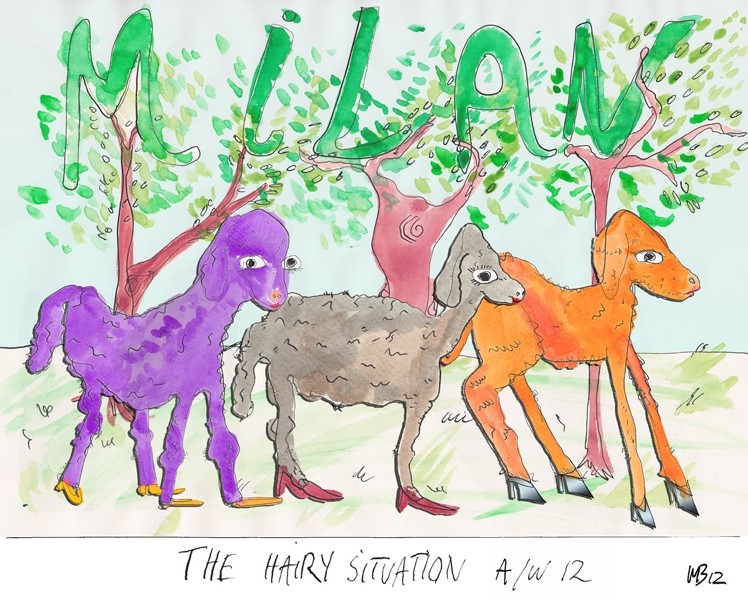This season, A is for Astrakhan. Pronounced “as-trah-kan”, it is the closely curled wool of newborn Karakul lambs from Astrakhan and also this season’s fur of choice as seen all over the Milan A/W12 catwalk...
This season, A is for Astrakhan. Pronounced “as–trah-kan”, it is the closely curled wool of newborn Karakul lambs from Astrakhan and also this season’s fur of choice as seen all over the Milan A/W12 catwalk: from atop Hamish Bowles’ head to throughout the Prada, Versace, Fendi, Jo Nui Fui, Dolce & Gabanna, Emilio Pucci, Salvatore Ferragamo and Ter et Bantine collections.
Whilst the fur trend was notably popularised two seasons ago by Miuccia Prada in her S/S11 Prada Jazz Age collection – which left everyone pining after a stripey, rainbow-coloured real mink fur scarf – the Milanese runways have seen the return of fur again for A/W12, this time in a major way. Prada featured purple-dyed Astrakhan coats; Versace had orange; Fendi had brown; Jo Nui Fui had green; and Dolce & Gabanna, Emilio Pucci, Salvatore Ferragamo and Ter et Bantine had black.
Lustrous in appearance and particularly desirable when adorning one of A/W12’s many fashionable designs, the origins of Astrakhan fur is in fact a far from savoury story: since the Karakul lambskin thickens after three days, the baby lambs are killed by the time they are three days old. In order to fetch the best quality of fur and to reap the highest profit, farmers kill the mother and remove the lamb from her womb before killing and skinning the fetes. Fetching around £15,000, buyers have to pay a high price for this fashion trend (or rather slaughtery), posing the question: when does fashion overstep the line in search of vanity and exclusivity?
The faux fur vs. real fur debate could go on for hours – Stella McCartney campaigns for vegan fashion whilst Anna Wintour avidly wears and editorially champions fur… – however when models at Fendi appear like they have just skinned a flock of sheep backstage before walking on the catwalk, when does enough, become enough? If a designer's inspiration comes from ritualistic, tribal dress – where fur is used as a symbol of strength and for warmth – it doesn’t mean that this has to be reflected on the catwalk, literally. Long gone are the times when man’s relationship with animal was that of a hunter who kills for survival.
Text by Lucia Davies
Margot Bowman is an illustrator, designer and DJ living in London. She is the Creative Director of The Estethetica Review, a fashion publication focusing on ethical fashion published biannually in conjunction with the British Fashion Council. Lucia Davies is junior editor at AnOther. She has also contributed to titles that include Dazed & Confused, The Independent, It's Nice That, Nowness, Twin Magazine and Wonderland.
